Storyteller: José Carrasquillo
Every few years, José Carrasquillo revisits D.C. to remind us why our theater scene is, in fact, magical

“I love telling stories,” says José Carrasquillo. “I love talking about people and what they go through on a daily basis. Directing is the way I can allow my storytelling ability to flourish.”
The 55-year-old began directing his own shows — with imaginary players — as a child. After studying theater in college, he bounced around for a bit, before settling in D.C. for the better part of 25 years, fulfilling a goal of becoming a theatrical director. Twelve years ago, Carrasquillo moved back to his native Puerto Rico, where, until recently, he ran a guesthouse for tourists. The business allowed him the flexibility to direct one or two shows each year.
With two of his productions being staged at local theaters — The Body of an American at Theater J, and El Paso Blue at GALA Hispanic Theatre — Carrasquillo has made a brief return to the city that initially embraced his aesthetic, which he likens to the “magic realism” made famous by the works of Colombian writer Gabriel García Márquez.
“García Márquez’s work is one of the reasons I ended up working in theater,” he says. “That was the literature I grew up with as a child. When I went to school, I was always attracted to the things that were adaptable that didn’t exist. I was able to tell those stories, they came very easy to me. I became known as the director who can make people fly on stage or who can do stories underwater. I became known early on as a magic realist.”
Carrasquillo hopes to resettle in Washington and continue directing part-time, but work in theater can be sporadic — even with more than 80 theaters in the D.C. area. “Rarely do I ever get called by somebody and assigned a play,” he says. “That’s not how I work,” he says. “About ten times a year, I pitch an idea to a theater about something I want to do for a number of reasons. They listen to me, they’re very polite. And then I don’t hear from them at all for sometimes years, until I get a call and they say, ‘Remember that story you pitched? We want to put it in the season two years from now. Get your people, start working on it.'”
Working on a show can be a long and intensive process, which is why Carrasquillo fully absorbs himself when mounting a production. To ensure he’s being true to the play, he often consults with the playwright, then studies the geography, the culture, the speaking mannerisms and the backgrounds of his characters to know how he can best portray them. It’s another reason why he prefers to work on only one or two shows a year.
“One show takes me hundreds of hours,” he says. “It takes me years of work, maybe one-and-a-half to two years of very intense work. And I don’t want to shortchange any particular show because I’m doing a million other things.”
Carrasquillo believes Washington is unlike any other theater market in that its participants are supportive, compassionate, even welcoming.
“In a lot of other markets, people want you to fall flat on your face, because it will be one less person to compete for a spot,” he says. “In D.C., people hire you and allow you to fail without the repercussions of being labeled a ‘bad director,’ or things like that. There’s always somebody who will extend their hand and say, ‘Get up. Let’s do the next show.’ And that’s a really comforting thing, because that’s how you grow as an artist.”
METRO WEEKLY: Talk a bit about your childhood.
JOSÉ CARRASQUILLO: I was born and raised in Puerto Rico. I had a very happy childhood, an incredible family. I grew up among a lot of people who were musicians, poets and storytellers. I was very artistic.
MW: In what ways were you artistic?
CARRASQUILLO: I was a loner. I really always have been. One of the things, very early on, that my mom gave me was a box theater piece thing. It was like a stage that came in a box, and it had little slats where you could stick little figures. It was a theater box, and I created my own stories. I played with that for hours and hours, just creating and disappearing into my own world. So today, when parents tell me their kids have imaginary friends, I know exactly what that is. As a kid, I loved reading and read a lot of literature and works that people don’t read until much later. And all of that was really because of my mom. I was really very close to her and she gave me this world that was unbelievable, and to me, that was plenty. It gave me a wonderful base in life.

MW: What was it about the mainland United States that made you stay here for 25 years?
CARRASQUILLO: That’s a complicated thing. Back then, when I came from Puerto Rico, the whole idea of a person being openly gay was still in its infancy. We were about thirty years behind the United States. I was always supported by my mom and by my family, but here, in the United States, one of the things I loved about it was I found a lot of people like me, whereas [back home], there were no people like me. I didn’t fit the notion of what a gay man was in their eyes, because to them, it was guys who wore dresses. And when I came to the United States, it turns out that most gay and lesbian people are exactly like you and I. It’s like, “Wow, this is incredible.”
MW: When did you come out?
CARRASQUILLO: I didn’t ever “come out.” I was always out. That whole notion of telling the world, “I’m a gay man,” I never went through that.
MW: But did people know you were gay as a child?
CARRASQUILLO: My mom did, and we talked about it. My grandparents knew. They just really always knew. It wasn’t until I was an adult that I could really formulate thoughts about my sexuality and what that meant psychologically. But that wasn’t coming out. That was just part of our everyday conversations that we would have.
When I came to D.C., one of the things that was very appealing to me was that, when I got here in ’85, not only did I make a large, extended group of friends, but also, D.C. was beginning to be a very fertile ground for theater. And I benefitted tremendously from that. It was a time of a lot of activism, and a time of finding my aesthetic as an artist. It turns out that coming out, and embracing a specific aesthetic, a queer aesthetic, and being political, was something I learned when I came to D.C. Because there was so much going on.
The major thing was, of course, the HIV/AIDS epidemic that decimated so many people. And that made activists out of all of us. We either did that, or we died. It made us politically aware in ways that we were not before, because it was pretty clear that the government didn’t care, so we had to take care of each other. The Whitman-Walker Clinic, which now we take for granted, was really the work of a lot of men who had this notion that, if we don’t do this, no one else is going to, so we have to care for each other.
MW: Did you get involved in any other political things when you came here?
CARRASQUILLO: ACT UP. Socially, one of the things I did was I immediately started running with DC Front Runners. That organization changed my life in many ways. It not only gave me an intro into a healthy world — how to eat right, how to exercise — but it gave me a network of friends, many of whom were losing loved ones. we became very political. We marched everywhere on the east side of the United States. Every time there was a march, we’d be there.
But there were also things we did that began to change the perception of how gay men saw themselves here in the city. We started a memorial in Rock Creek Park, to plant trees for every member that we lost. And today, I still run by that little group of trees, and I know exactly all the friends I lost. Things like that are forever.
Politically, the problem with the disease was that it was just a bad label to brand all of these people with. It wasn’t. And today, many people are living with HIV. It’s not how it was before.
MW: What would you say is a trademark characteristic of your work?
CARRASQUILLO: If you see the body of my entire work, there are certain things that are my signature. For instance, I don’t do realism very well. What I typically rely on more is the imagination of the audience. You stimulate it, and they just go with you. So a lot of the work that I do is either driven by the words, the actors or movement.
The show playing at Theater J is an example of the kind of work I do. And an interesting thing about that work, The Body of an American, is that when you check the other productions of the play — I think we’re the fifth or sixth production — every other production has been set more realistically. Mine isn’t. There’s no props. Just two actors, two stools. That’s it. Let the actors do the work, let the actors tell the story.
Another example of how magic realism and the kinds of stories I do informs my work. There are two guys, buddies, after one gets out of jail, searching for his wife and his father. And both couples are on stage all the time, they just can’t see each other. There are times when they’re literally on two chairs doing this. And I decided I didn’t want to do that. How then do you manifest movement that would let us know that you’re in a car. Well, we’re going to do line dancing. And that will be wonderful, because it’s exciting, and it doesn’t keep the actors static on stage. So we’re going to dance. That’s where the magic comes from. That’s magic realism at its best. You just take what is written — the audience will get it, that they’re driving. It’s a lot of stuff about faith and fate in the play, and all of that is magic realism. It’s other-worldly. The characters don’t understand it, but they feel the presence of that in their lives, and how they see it.

MW: What else have you learned from your years as a director?
CARRASQUILLO: That in addition to being storytellers, we’re doing a play, and our main goal should be to serve the play. Not to serve how we think it should be done, but to serve it as the playwright wrote it. The guy who wrote The Body of an American is Dan O’Brien, an Irish playwright, a beautiful, stunning writer. He’s a poet. And what is interesting is that when he and I talked on the phone about this work, what an amazing, enlightening conversation that was. First, because he asked me, “Why do you want to do the show?” And my response was: “Two actors, two stools. It just doesn’t get any better than that for me.” And he said, “Oh my God, that’s why I wrote it. I wrote it just like that, but all of the other productions have treated it more like realism, so there’s hotel rooms and all of this, and all of that. None of that.” And then he asked me what I thought the play was about. And I launched into a 40-minute monologue on it.
MW: What would you say it is about?
CARRASQUILLO: Thematically, the play is about learning to forgive ourselves for things we have done in the past that have affected other people. In this case, a journalist, who is a war photographer, took a photograph in 1993 of a soldier being dragged through the streets of Mogadishu. And he carries such a guilt, a weight, over having taken the photo. It basically haunts him. He heard the voice of the soldier, the moment he took the picture. “Don’t do this. Because if you do this, I will own you forever.”
You see 19 years in the life of these two people: the photographer and the playwright, who many years later, listened to a podcast of Terry Gross’ “Fresh Air.” He was listening to it because the photographer had written a book about his experiences and specifically about the photograph. Now, the playwright is writing a play about ghosts that haunt people. And the second he hears the podcast, he begins to track down the photographer. In doing so, they develop a friendship that lasts many, many years. To this day, they’re good friends. And it turns out, not only is Paul Watson, the photographer, dealing with the ghost that haunts him, but in becoming friends with Paul Watson, Dan O’Brien is able to deal with the ghosts that haunt him.
I was talking to Dan about what I thought the play was about. At the end of the discussion, I said, “Dan, please call the theater in five minutes, because I cannot wait until tomorrow. I’m living with this show day and night, and it would just kill me. I haven’t slept in days, and I really need to know if you want me to do this.” And he said, “Oh, no, relax. I want you to do it. But — the show is a love story. You have to treat it as one, or it won’t work.”
It was truly unbelievable, because it’s two straight dudes. But it turns out he was absolutely right. The two men have never found friends or anybody they can talk to or relate to, the way they do to each other, and therefore they become essential to each other’s lives. That was illuminating to me.
MW: Tell me more about your show at GALA.
CARRASQUILLO: That other show that I’m doing is called El Paso Blue. It takes place in Texas. I’ve been wanting to do that show since 1997. The second I read the show, I immediately began pitching it here, because I thought it would be a great story to tell. Theaters were not interested.
The writer is Octavio Solis, one of the foremost second-generation Latino writers. While I think they admired the writing, back in 1997 many theater producers maybe saw him as “Oh, he’s a Chicano writer, that kind of story might not interest people here, because we’re more of this region.” What I love about Octavio’s work is he takes a classic, the Oedipus Rex idea, and sets it in a contemporary setting, in this case, El Paso, Texas, which happens to be where Octavio was born. If I could make a comparison, he’s probably the Latino equivalent of Sam Shepard. it’s just a land which is sexual and sensual and raw and very culturally specific. But in this case, it’s also a very feminist play. I just love the play, I’m having so much fun with it.
MW: What attracted you to it?
CARRASQUILLO: It’s just the beautiful language. And again, the fact that that particular story, that particular setting, we’re not familiar with here. The story is very much Oedipus Rex. In this case, a guy goes to jail. He gives his wife to his father to take care of her for a year. When he comes out of jail a year later, the old guy and the girl have run away, they become lovers. That was an interesting setting for the classic. Texas is very much almost its own country. El Paso is a border town, there’s many different cultures, and they are all explored in this play. I just thought, “What an amazing setting, and what a beautiful set of characters.”
When you read a play sometimes, you know that the playwright is eloquent and has a distinctive voice, has talent. In the case of Octavio, it’s that each of those characters sounds so different. Sometimes you read a play and the voice of the characters seems very much similar to the rhythms of the play. Not here. Each person is distinctive, and that’s what’s exciting.
MW: What’s the most complicated part of staging a play?
CARRASQUILLO: It depends. There are many, many areas of a production. And because each play, and each team, and each theater is different, there are areas that are very difficult to do a specific play. For example, The Body of an American, the most difficult thing was to cast it. And it took months. You needed two actors whose chemistry on stage had to be there. I saw many, many great actors, actors I love and want to work with. There were a lot of choices to be had. But the second these two actors walked into the room, it was like, “Okay. There you go.” Because it has to be about the chemistry. That was the most difficult thing. Everything else was easy.
At GALA, this is a very, very complicated story, El Paso Blue, based on a classic that people know. It has music, dance, actors singing, all of that, with a company that has a history of 40 years, and they do very strong work. But when you are at GALA, you have to do a lot of the work yourself. There’s not a staff doing this and that. A lot of that falls to the director to re-execute and direct and guide people to do it. In that sense, you have to come ready to do a lot of work, and a lot of work in areas where you may not be as seasoned. I could use a musical director, a choreographer, which I don’t have. I’m tapping into friends and people that can come and help me realize my vision. And sometimes that is the best definition of community theater, where everyone is invested in telling the story.

MW: What would you say your greatest success was?
CARRASQUILLO: The most successful play I’ve ever done was Samuel Beckett’s Happy Days. I did that three or four years ago with an actress named Delia Taylor. I directed it, and I was in it with her. It has to be the most fulfilling thing I’ve ever done. Beckett is work that I’ve studied, work that I love, not work that I wish to do on stage. It’s too difficult, it’s too important, and I feel like I sometimes don’t have the tools to do it. I got into it because Delia wanted to do it, and she and I are artistic soulmates. It turned out that our production was a very sincere and honest production. So I’m very proud of it.
Very early on in my career, I did a show called Patient A, based on the story of one woman who died of AIDS. She believed that her doctor gave her the HIV virus in the dentist’s chair. That was a very controversial play for its time. It was very powerful. And in D.C., it was the production that made me. Because we were at a time — I think it was around 1992 — when there was so much politics, and finger-pointing, and blaming. This was a very honest show that tried to look at AIDS/HIV from many points of view, and the production was just a great, great play to have this kind of conversation. And again, very theatrical. No props, nothing. Just three actors on stage.
There are other things. I love comedy, I just don’t get to do it that often, because comedy is very hard. There’s a little show I did at GALA a couple of years ago called The True History of Coca-Cola in Mexico. I love that show.
MW: What’s hard about doing comedy?
CARRASQUILLO: Directors who are good at it, they just look at a sentence, and know how to build it, lay it out, and land it. It’s a formula. It’s second-nature. I don’t have that. I have to work very hard on it. This play at GALA is a comedy, and I’m terrified of it. And yet I have very good actors who, during the rehearsal process, are completely willing to make total asses of themselves until we find where it lands, and what’s funny, and that they understand it, and make it organic so it really works within the characters and what they’re doing. Comedy has a different drive and energy than regular drama. You need to understand that. When jokes are flying, are they staggered? Are they building to a bigger joke? What are they revealing about the character? And then you have to make certain that you’re not going so out there that you’re not creating stereotypes, because the jokes are really not being felt or being delivered from a place of the heart, that you’re just playing a type or whatever. For all of those reasons, it’s really, really difficult. I can’t tell you how much I admire comedians, people who do stand-up, and people who can take a play and elevate it to the next level because they understand the levity of what comedy does and how it’s supposed to function.
MW: What is a play that you haven’t done yet that you’d like to direct?
CARRASQUILLO: Oh, wow. That’s a good question. I’m 55 now, and I have a bucket list. There’s so many of them. I would love to do The Crucible. I think it is one of the greatest pieces of theater. I’d like to do some Tennessee Williams.
MW: A Streetcar Named Desire, maybe?
CARRASQUILLO: Interestingly, no. There are others that are better placed. I love Streetcar, but I think The Glass Menagerie is an astonishing piece of theater. And also, he wrote a play called Camino Real. That’s the one I want to do. Because again, it’s a sufrio, magic realism. I’d love to do A Long Day’s Journey into Night, by [Eugene] O’Neill, because when you think of giants of the American theater, you can’t speak without mentioning him. And that play, which was not supposed to be produced, is as good as it gets. The whole fucking four hours of it means something. There is not one word that is not meant to be spoken.
MW: Are there any actors you really want to work with?
CARRASQUILLO: Yes. Sarah Marshall is at the top of the list. Holly Twyford would be second. I’ve been really lucky with male actors, because I’ve worked with so many big D.C. stars. Jerry Whiddon, I’d love to work with him — I think he’s a phenomenal actor. I would give my life to work again with the two I just worked with in Theater J — Eric Hissom and Thomas Keegan. They’re the best. That’s an incredible gift, to know, as a director, you’re working with two actors at the top of their game, and they’re giving you their body and soul. That’s incredible. If I could ever find work for them, where we could work together again, I would do that in a heartbeat.
Craig Wallace is another. Ford’s Theater, every year, does A Christmas Carol. For the first time ever, they will have a black Scrooge, Craig Wallace. I’ve never seen it, because it’s really not my thing, but this year I will see it. That man is so sensational.

MW: Do you think D.C. has the kind of theater reputation that a place like New York does, at least nationally?
CARRASQUILLO: Let me tell you the reality of it. Actors here make more money than actors in New York. In New York, they get paid very little. What people make here for a show in a professional theater company is a lot more than what they make in New York. So that word is out. Many people come here because they love the community. It’s not a secret anymore. The [actors’] union has, I bet, over 1,000 actors in this region. That’s a lot of actors. They’re working professionally, not only in theater, but in film work, and commercial work, and they’re doing voiceovers.
New York is a different thing, because people view Broadway and that kind of potential project as the highlight of American theater. It isn’t. It’s the highlight for producers when a show like Hamilton happens. But those are only 1 in 20. Where the real work happens has always been in regional theater. It’s been in Seattle, it’s been here, it’s been in Chicago. And a lot of things that happen in New York were first tested elsewhere. There was a show called Photograph 51, which had a workshop at Joe’s Dance Emporium in Maryland. Then it had a world premiere at Theater J. That show went to London. Nicole Kidman was in it. It’s now coming to Broadway with Nicole Kidman in it. That’s an example of a show that in New York would not have been workshopped and produced and given the care that it needed before it opened at that level. But it started here. Arena has done work, Woolly continues to do world premieres and work they’ve developed, and so on. We’re not only a theater town, we’re fertile ground to do work that really means something at a national level.
One of the reasons I want to be here, want to come back here, is I think D.C. is the best theater town in the entire country. There’s nothing like it. It’s very tight. It’s like an extended family of people. And it’s a very loving town in that way. When people come from the outside, and they don’t play by our rules, they’re not liked. That’s just the way it is. And that means something to me when I see actors who come to view each other’s work, and they’re there for people, and hug each other, and say, “Good work.” That is just tremendous. That sometimes doesn’t happen in other places, because other places are more competitive. People think: “If you’re on stage, and I didn’t get the part, then you are taking my job and I hate you for it.” Not here.
The Body of an American runs through May 22 at Theater J, located at the Washington, D.C. Jewish Community Center, 1529 16th St. NW. To purchase tickets or for more information, visit washingtondcjcc.org.
El Paso Blue opens on June 2 and runs through June 26 at GALA Hispanic Theatre, 3333 14th St. NW. For tickets or more information, visit galatheatre.org.
Support Metro Weekly’s Journalism
These are challenging times for news organizations. And yet it’s crucial we stay active and provide vital resources and information to both our local readers and the world. So won’t you please take a moment and consider supporting Metro Weekly with a membership? For as little as $5 a month, you can help ensure Metro Weekly magazine and MetroWeekly.com remain free, viable resources as we provide the best, most diverse, culturally-resonant LGBTQ coverage in both the D.C. region and around the world. Memberships come with exclusive perks and discounts, your own personal digital delivery of each week’s magazine (and an archive), access to our Member's Lounge when it launches this fall, and exclusive members-only items like Metro Weekly Membership Mugs and Tote Bags! Check out all our membership levels here and please join us today!





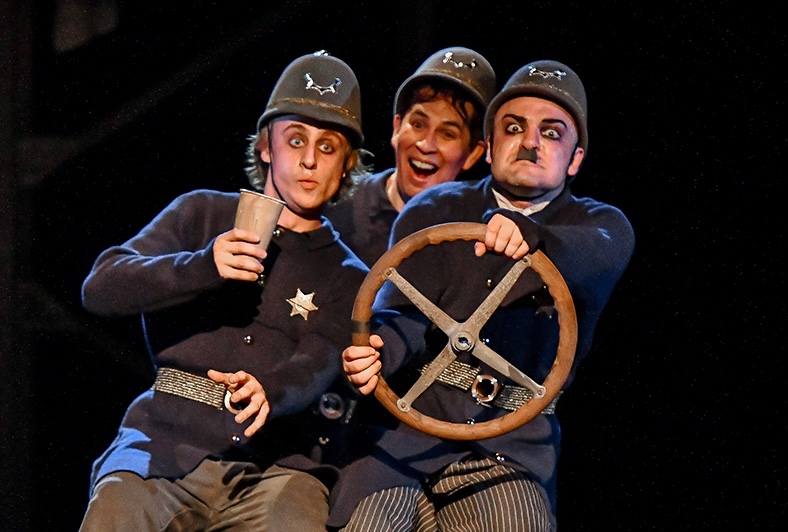
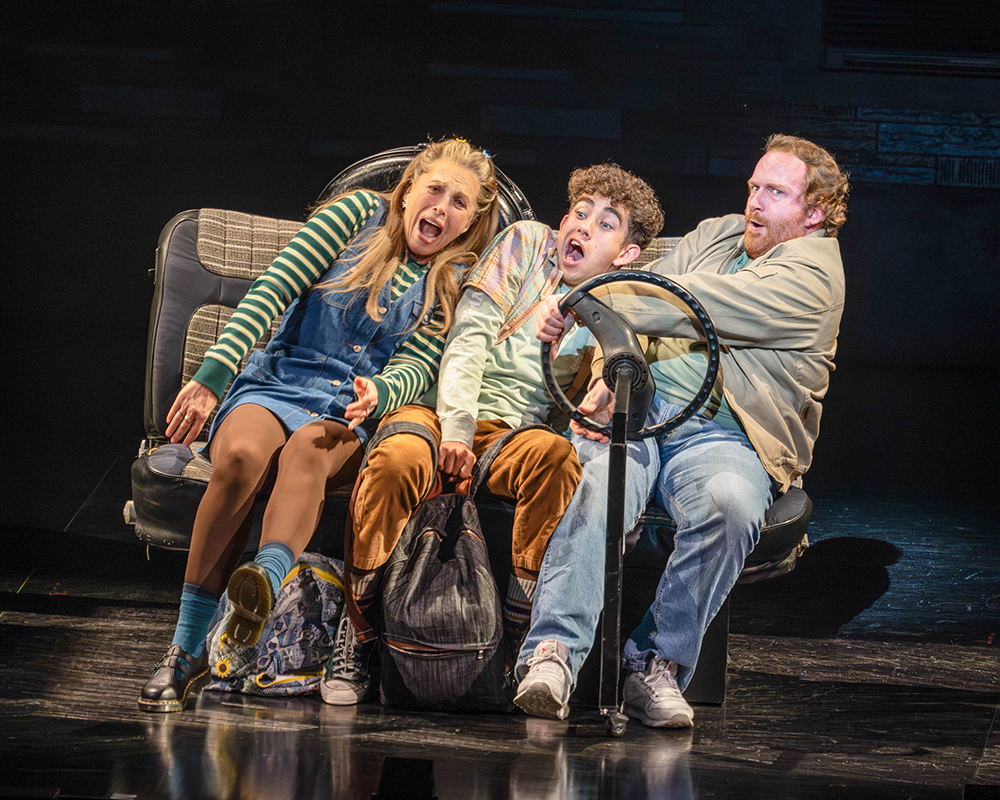
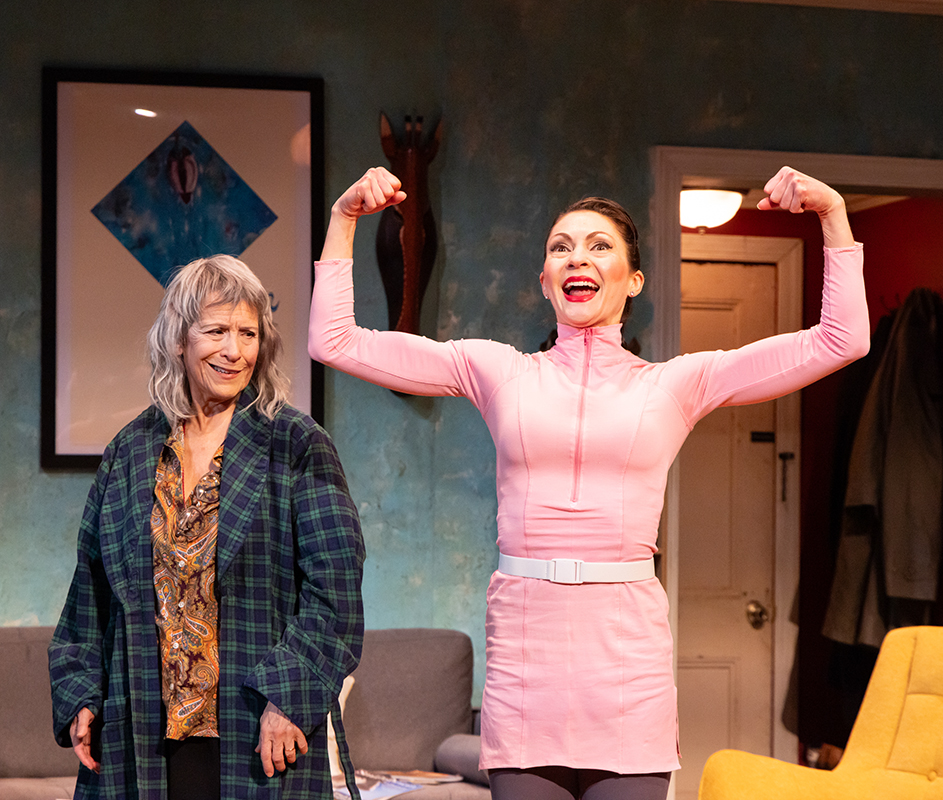













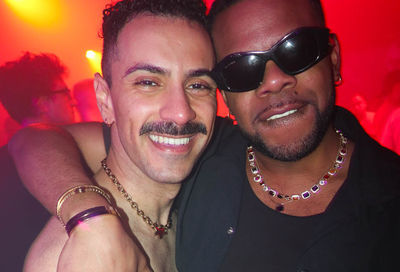
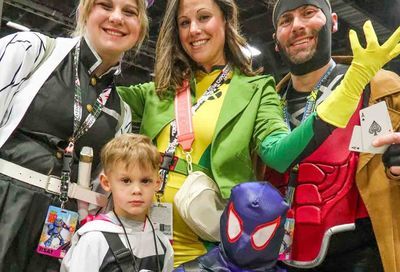
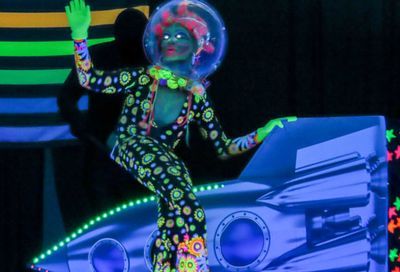
You must be logged in to post a comment.